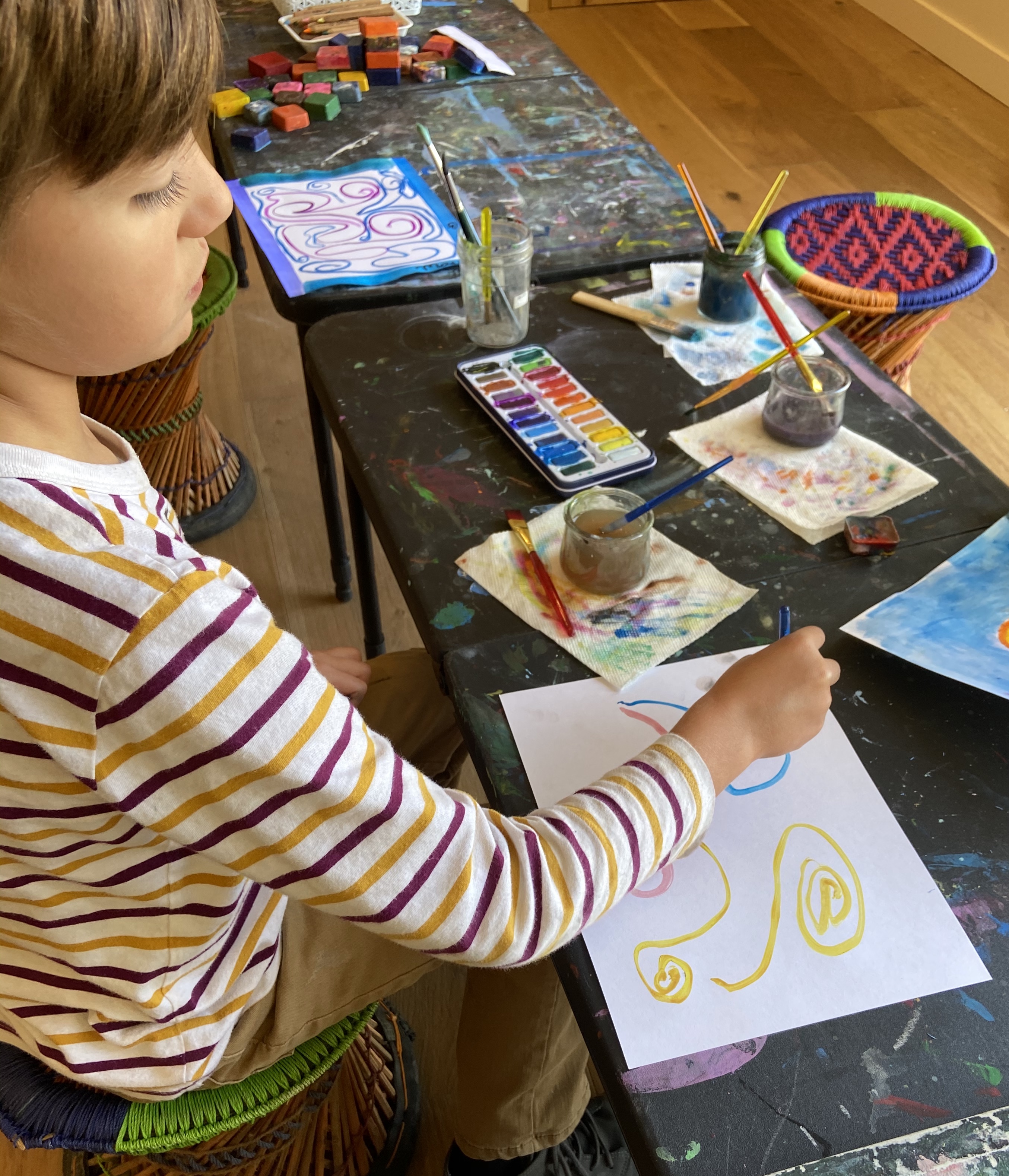
Painting is one of the most creative, fun (and sometimes messy) forms of visual arts. If you look at the most basic concept of painting, anyone can do it. My objective with this ultimate guide is to give you all the tools and information you need on how-to teach a child painting. The resources included in this Ultimate Guide should be beneficial to at-home parents and early childhood and elementary school teachers.
Why children love painting
One of the most common domains of visual arts, is painting. Children love playing with paint; it’s a very tactile medium. However, it’s important to remember that children lack the ability to paint realistic images in the beginning years, but they can still enjoy the creative process and learn basic brushstrokes to build lines, shapes, and textures to eventually make great imagery.
What is painting?
Painting is the action of making brushstroke marks with a paintbrush, hands, sponges, paint rollers, or stampers. Brushstrokes are made with a liquid pigment, called paint.
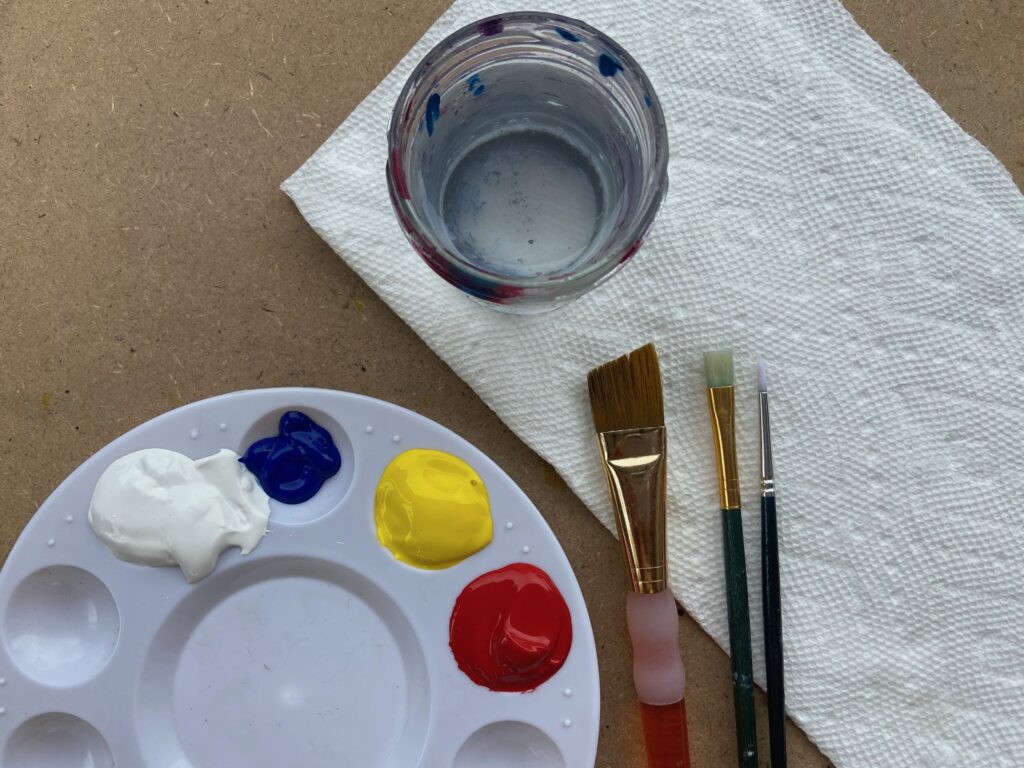
Benefits For Children
By showing young students how to use a paintbrush, you’re helping them reach critical milestones .
Painting is high in visual-auditory connectivity in the brain. Strong connectivity occurs and the child becomes intensely focused on his or her handiwork.
Painting Supports Sensorimotor Development
Painting provides children with the opportunity to use their hands on a regular basis. Making fluid brushstrokes helps children build their hand muscles and strengthen their hand-eye coordination as well as fine motor movements.
Sensorimotor development is a physical attribute that advances as children grow. Fine motor control helps with creating paintings. These movements become possible with full control of muscles.
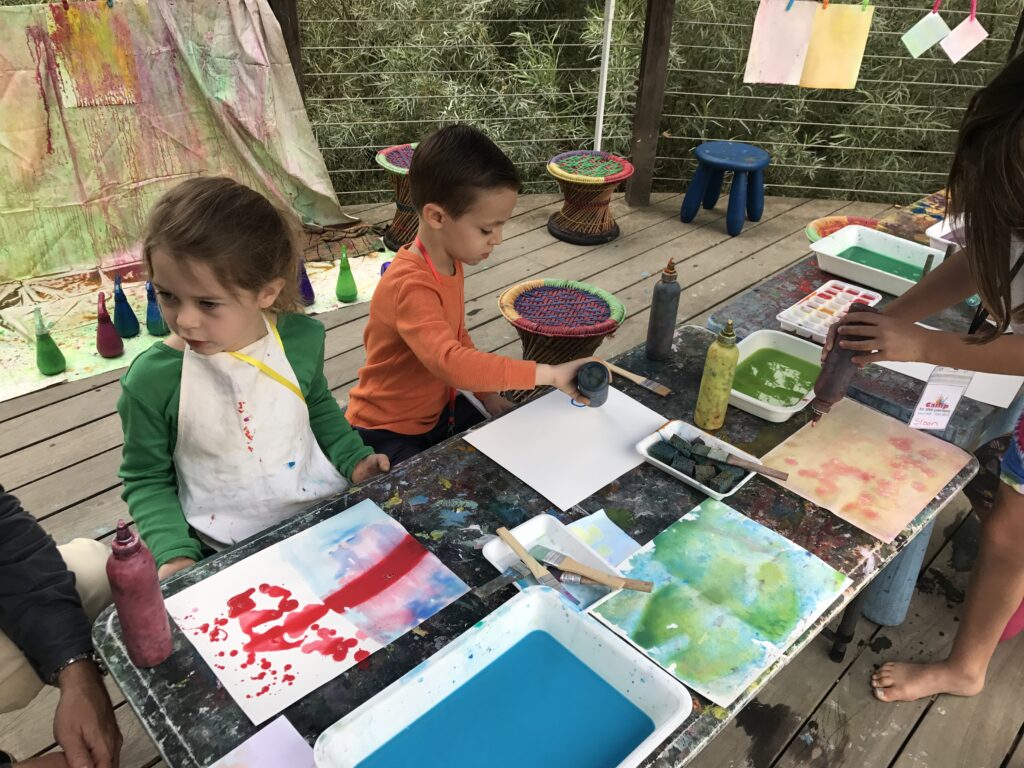
Painting Develops Artist Language
Painting lessons help children make connections across different subjects and ideas to be able to better understand things. So when kids explore different painting lessons, they’re actually learning how to communicate what they see in their artworks. In doing this, they unknowingly start making observations such as, “I see color,” “I see pink,” “I see a squiggly line,”.
Painting Regulates Stress
Creating art also helps children wire their brains to regulate stress. Painting gives them the tools to learn how to calm themselves down. Tactile sensory processing occurs when children create art. Neural networks fire and signal their focus solely on what they’re doing with their hands. Blocking outside thoughts and stimuli. Painting involves active learning, meaning they have to focus on what they’re doing immediately. Which takes away the upsetting, stressful things that are happening in their environment.
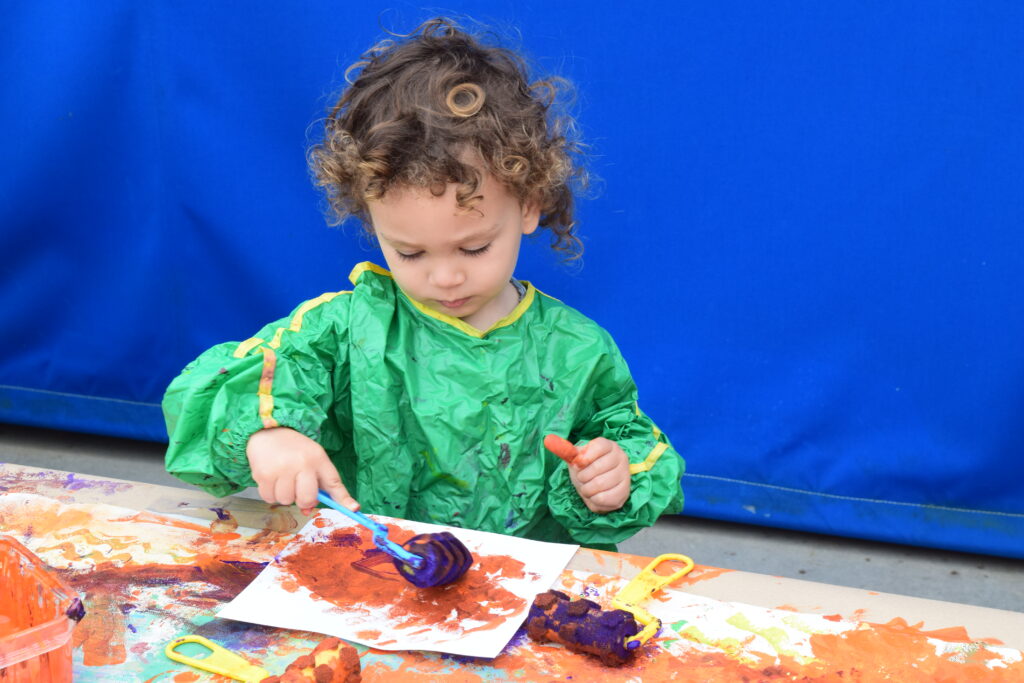
Painting Builds Memory
When children learn repeated movements, they’re strengthening their implied memory and are actually storing this new information. The next time that they engage in painting, implied memory kicks in and their hand movements will come naturally—the actions are wired and become linked in their brain. That means they don’t have to consciously think about every minute action; they will see a paintbrush, and instinctively know to pick it up, dip it into the palette or water, and start creating.
Painting Builds Spatial Awareness
Spatial intelligence is learned through creating with forms in space. When children make art, they become aware of the spatial relationships among objects in the realm of their own experiences. This gives them the ability to visualize and manipulate elements, rotate objects, and distinguish depth and balance—which is critical in early childhood brain development.
Let Children Explore First
Don’t try introducing young children to painting through lessons; if they’ve never painted before, just let them explore and discover what paint is naturally. If you’re uncomfortable giving them a potentially messy medium without any guidance, then you can take the lead by dipping a paintbrush into paint and painting alongside them; kids love to mimic the actions of adults!
Keep Painting Lessons Simple
Give your students painting projects that are process-based and open-ended. This means your students do not have to follow directions to get an expected, specific result. Process-based activities give children freedom to explore the various paint mediums and design their own artworks in any way they desire.
Start with Few Options
Give your students just a few color options at first—maybe even limit it to one color. Too many options can be overstimulating, and cause them to lose focus (which could lead to messes).
Minimize Messes
If you don’t want large messes, shrink down the paints and paintbrushes. Use the smallest available size of paintbrush and put paint into small containers (as opposed to giving students the entire bottle). This is one of the major tricks I share in my book Kids Painting.
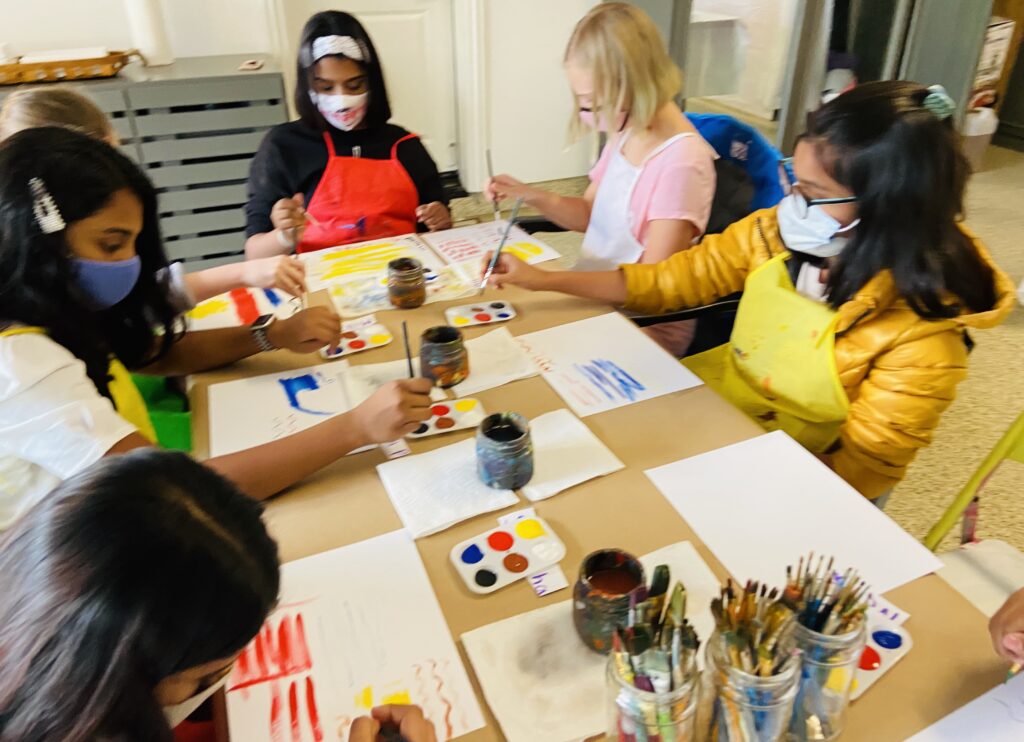
Focus on Brushstrokes
Once your students have a grasp on how paints work and can control their movements a bit, move your focus to teaching brushstrokes. Read this article for tips on teaching kids how to create brushstrokes.
Use Painting to Teach Color Theory
One great way to teach color theory concepts is through painting! Start by giving your students a single color to paint with, but create different tones and hues for them to use. For example, start with a dark green, then add drops of white paint to it to make lighter and lighter shades.
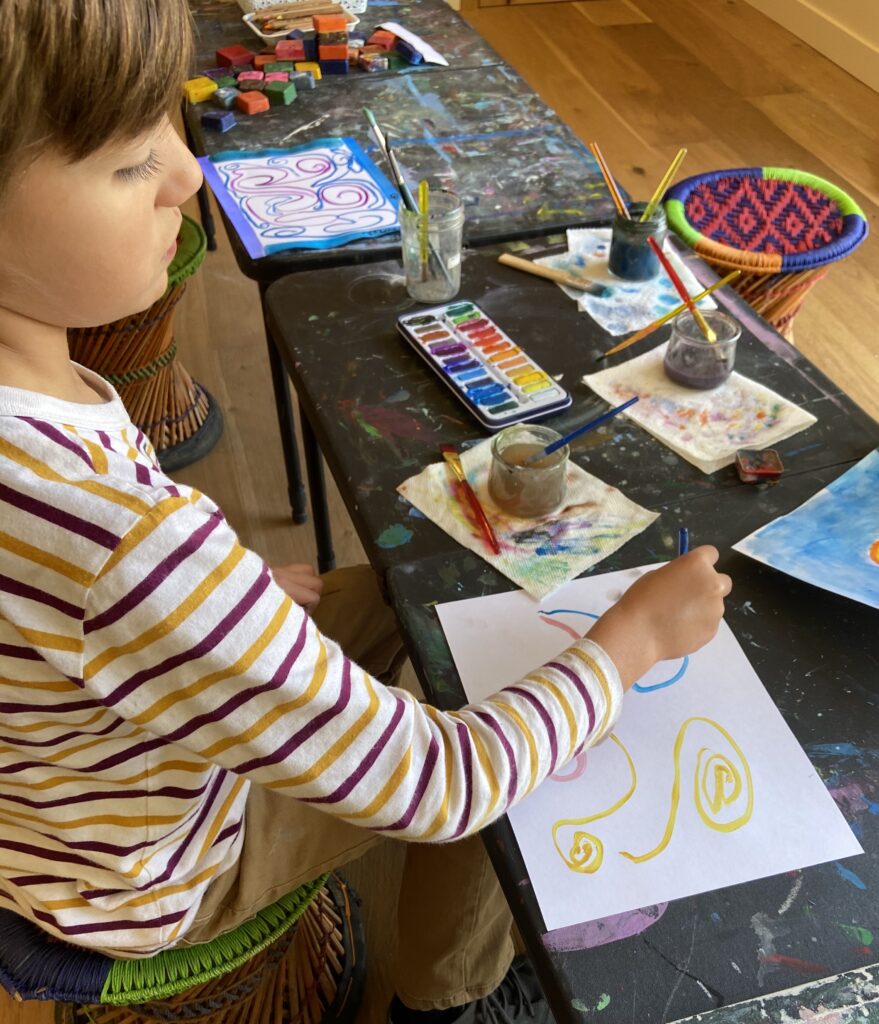
Choose Safe Paints
Only use paints that are safe, non-toxic, and intended for young children. If products carry a non-toxic seal or claims the product “conforms to ASTM D 4236,” that means all of the potentially hazardous components of the art product have been evaluated by a qualified toxicologist and clearly labeled on the product packaging. Most adult fine artist supplies don’t have this seal, so be very careful when purchasing.
The surface your students are using will determine the best paint for their project. For example, acrylic paint has the sticking power to help it adhere to canvas; watercolor paints need a thicker, more absorbent paper; finger paints and tempera paints will work on most regular paper.
Here are some other paints to consider:
- Dry watercolor cake palette, 36 colors – best for ages 5+
- Watercolor finger paint – best for ages 3+
- Acrylic paint (kids/student-grade only) – best for ages 5+
- Watercolor pencils – best for ages 5+
- Watercolor Crayons – best for ages 5+
[Visit Nature of Art for Kids for more non-toxic, eco-friendly, kid-safe painting supplies!]
Tip: Using watercolor paints, which can be diluted to near transparency, makes it easy to manage stains; start with these until you and your class get more familiar with painting and its clean-up.
Dress for a Mess
Young kids lack fine-motor skills to keep paint on in the palettes and on their paper, so be prepared for some mess. It takes many years for kids to stop making frequent spills. Anytime kids are painting make sure they’re wearing “paint clothes,” or old large t-shirts, a smock, or some other type of cover up. Even if the bottle says paint is washable, it can still soil clothing. Plus, there’s no real guarantee that the pigment is not going to stain…trust me!
Designate a Painting Area
Before painting starts, designate a painting area for the kids to work. Make sure they know that this is where paint will be set-up, activities will be completed, and the materials will stay. Never let kids get lazy about this rule! Remind them that this is the only place where painting is allowed. If necessary, put down tarps, rugs, or towels in this area to keep floors clean during any painting activities.
Painting Book
I’ve actually created an online training that delves deeper into teaching young students how to paint. Painting Key Lessons 101 gives you the foundation for demonstrating and presenting painting lessons in your Montessori classroom, even if you don’t feel like you have the skills or experience. In the 1.5-hour video training, I also cover the types of paints that are best for children, and how to set up lessons so they’re integrated with other subjects and allow kids work independently. It truly is a shortcut to becoming an expert in teaching your students how to paint; AND, even better, you can earn 1.5 CPD hours once you complete the training and complete a quick survey! To enroll and get started, click here.
If you want more information, instruction, and tips for teaching kids how to paint, check out my book, Kids Painting. It includes everything you need to know about how young children learn how to paint, and gives you lists of kid-friendly paint supplies, art project/lesson ideas, and ways to set up your classroom to provide inspiration and avoid messes. To purchase Kids Painting, click here.
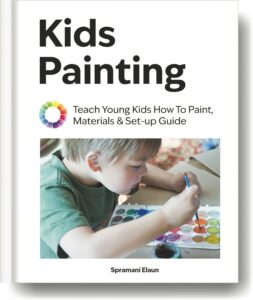
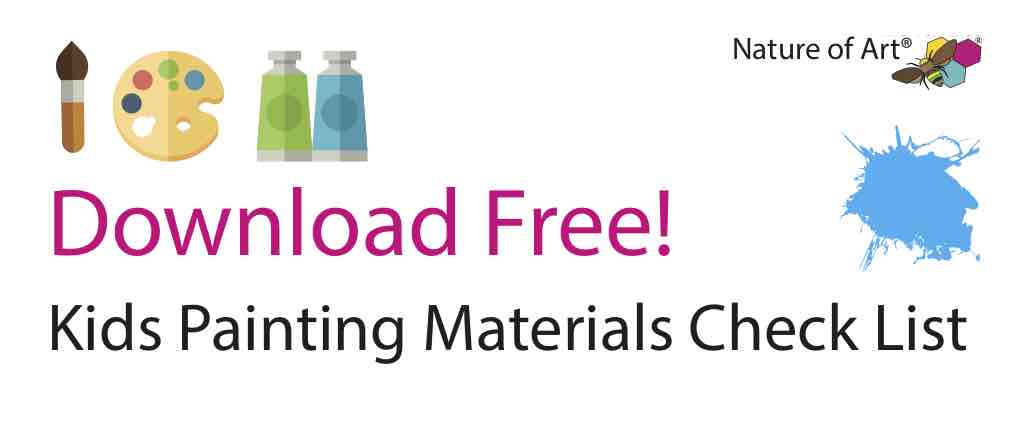
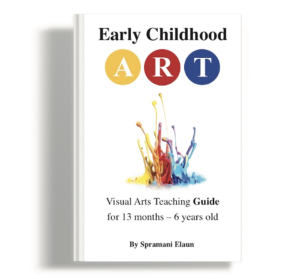
All rights reserved © 2025, Nature of Art®

No part of this blog may be used or be reproduced in any manner whatsoever including reproducing, publishing, performing, and making any adaptions of the work – including translation into another foreign language without written permission except in the case of brief quotations embodied in critical articles and reviews. Nature of Art® Publishing P.O. Box 443 Solana Beach, California 92075.
